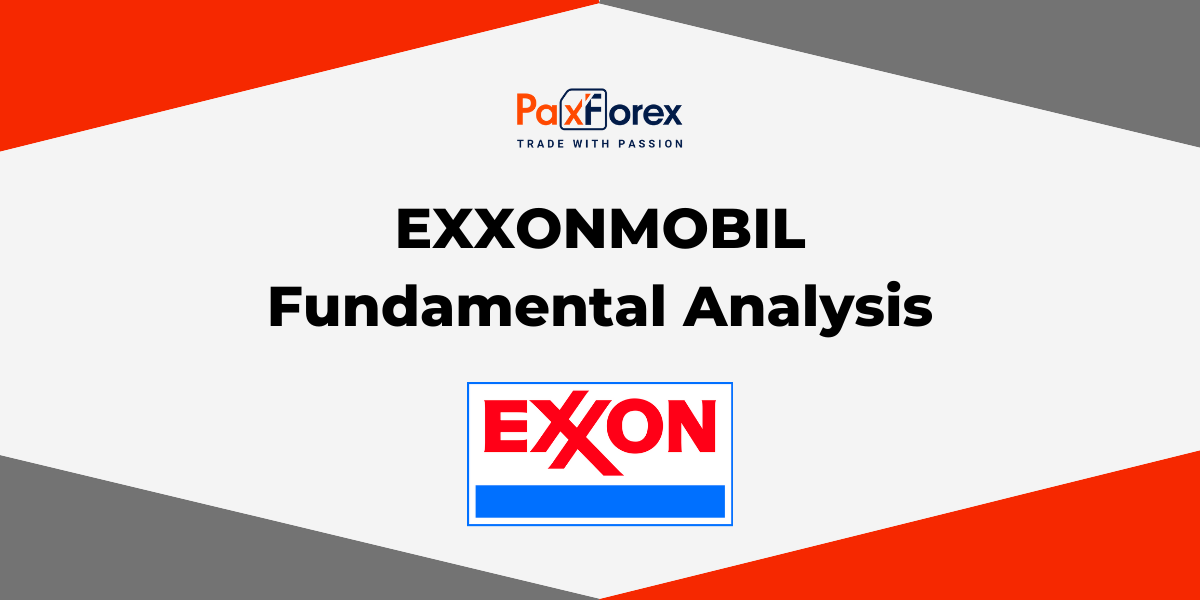
Source: PaxForex Premium Analytics Portal, Fundamental Insight
ExxonMobil recently reiterated its intentions to proceed with its fifth offshore oil project off the coast of Guyana. The suggested offshore project will cost 27% more than the previous one. The first batch of oil will be produced in 2027, after which production should continue at a steady pace for two decades.
For XOM and its partners, Hess and CNOOC, this large-scale venture represents a bold bet for the future of the oil market. Here's a closer look at ExxonMobil's latest multi-billion dollar drilling development and whether it should be seen as a catalyst for buying hot oil stocks.
According to a Reuters report, ExxonMobil plans to approve its fifth oil project in Guyana. The Uaru field is estimated to cost $12.68 billion to develop, 27% more than the $10 billion for the company's fourth project in the region (One Guyana). The field is expected to produce 250,000 barrels of oil per day (BPD) - the same level of production as One Guyana - and that capacity should be maintained for two decades. Inflation and the broader scope of the project have led to higher expected costs for Uaru'.
ExxonMobil and its partners have already committed to invest $30 billion to build the first four projects in Guyana. ExxonMobil is the operator and is financing 45% of the capital investment. Hess owns 30% and CNNOC is a 25% partner. The fifth project will increase production capacity in Guyana to 1.2 million bpd by 2027. This will allow them to triple production from last year over the next few years.
For ExxonMobil and Hess, Guyana was a watershed moment. The companies made their first offshore discovery in that country's waters in 2015 and began production back in 2019. ExxonMobil has made more than 30 discoveries there, discovering about 11 billion barrels of oil. Guyana believes there is even more oil beneath its waters and estimates its resources at 25 billion barrels. It plans to auction off more acreage licenses to attract other companies to explore off its shores.
ExxonMobil's strategy of continuing to invest in oil and natural gas projects paid big dividends last year. The company is capitalizing on growing production in low-cost regions such as Guyana to take advantage of rising prices and set a record third-quarter profit of $19.7 billion. Although the company anticipates its Q4 profit to be down from that peak, it was on track to make a full-year record profit of about $58 billion. That would far exceed its previous peak of $45 billion in 2008 when oil prices briefly climbed to $142 a barrel. ExxonMobil's surge in profits and cash flow in 2022 allowed it to increase dividends, repurchase stock, reduce debt and invest in expanding its operations.
The surge in profits and increased cash flow have helped ExxonMobil's stock price rise sharply. Since the beginning of last year, the stock has soared nearly 85%. They are now just below their all-time high of $114.18 per share, which was set in late November.
Even though the stock price has risen significantly, ExxonMobil still trades at a reasonable valuation - less than 10 times earnings and FCF. That's cheaper than the broader market, given that the current price-to-earnings ratio in the S&P 500 is over 17. ExxonMobil also has a higher dividend yield (3.2%) than the S&P 500 (1.7%).
ExxonMobil's valuation is affected by the tension wrapping the future of the oil industry as the global economy works to transition to lower-carbon energy sources. This could lead to lower demand for oil and put pressure on prices.
Nevertheless, ExxonMobil management is adamant that oil will remain a vital fuel for decades to come. The company predicts the global oil market will reach $6.5 trillion by 2050, up from $4.6 trillion last year. That's why the company is investing heavily to increase oil production in places like Guyana.
One of the main drivers of ExxonMobil's confidence in the future of the oil market is the potential for carbon capture and storage to address fossil fuel emissions, potentially allowing the world to succeed in effectively combating climate change without a complete transition to alternative energy sources. ExxonMobil believes the carbon capture market will grow to $4 trillion by 2050. Carbon capture is one of several carbon reduction investments ExxonMobil is making to fuel its growth.
ExxonMobil stock continues to rise even though oil prices have fallen significantly in recent months. This is due in part to the fact that many expect crude oil prices to rise this year. Meanwhile, the company's future is still very bright thanks to growth catalysts such as fields in Guyana and carbon sequestration. That makes ExxonMobil stock still look like an attractive long-term investment opportunity, despite its near-record share price.
As long as the price is above 105.00, follow the recommendations below:
- Time frame: D1
- Recommendation: long position
- Entry point: 110.46
- Take Profit 1: 114.00
- Take Profit 2: 120.00
Alternative scenario:
If the level of 105.00 is broken-down, follow the recommendations below:
- Time frame: D1
- Recommendation: short position
- Entry point: 105.00
- Take Profit 1: 102.00
- Take Profit 2: 98.00













